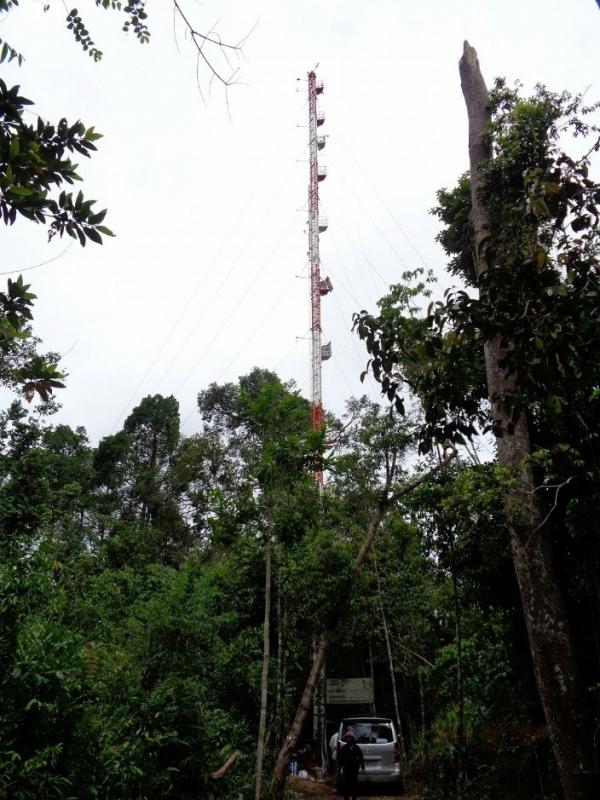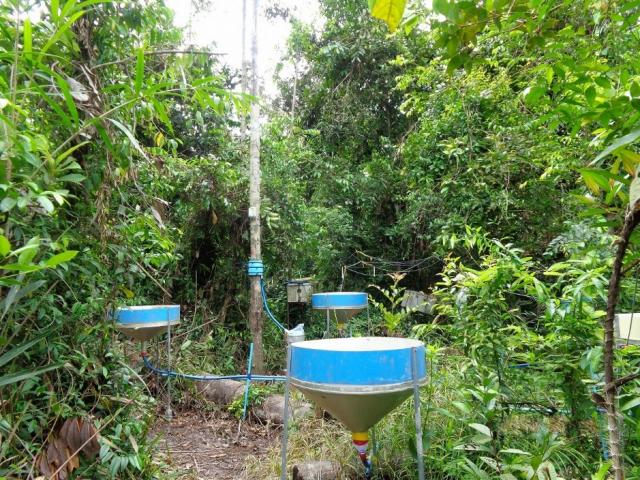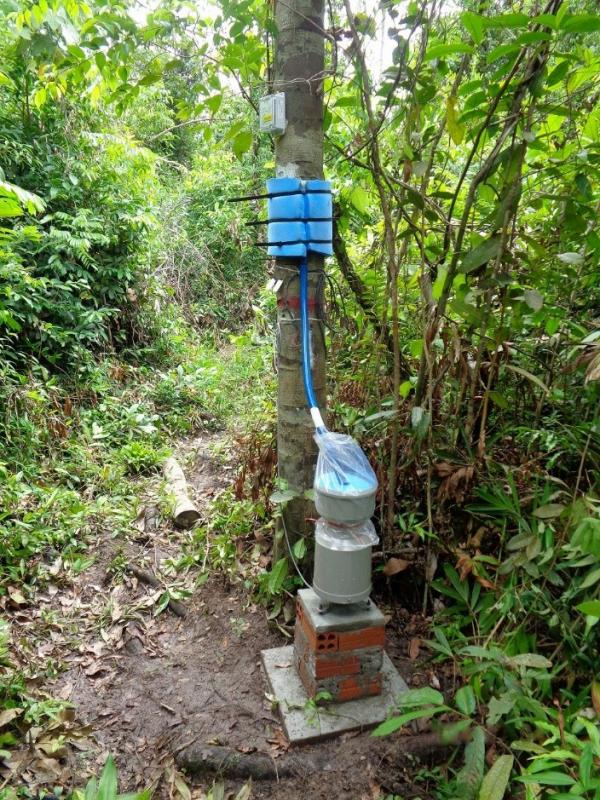Home > International Partnerships > Collaborative Research > What happens in forests during extreme storm events? -Delving into interception mechanisms under high rainfall intensity-
Update:May 16, 2025
Main content starts here.
What happens in forests during extreme storm events? –Delving into interception mechanisms under high rainfall intensity–
1. Partners
Forestry Administration, Cambodia
University of Delaware, United States of America
Tokyo University of Agriculture and Technology, Japan
Kyushu University, Japan
Fukushima University, Japan
2. Research
FY 2022–2025 Grant-in-Aid for Scientific Research (KAKENHI)
3. Lead Researcher
IIDA, Shin'ichi (Hokkaido Research Center)
4. Background
A portion of rainfall is captured by leaves, branches and stems, and subsequently evaporates into atmosphere. This phenomenon is called evaporation of intercepted rainwater or interception loss, which is equivalent to 20 to 30% of gross rainfall. Detailed examination of the intricacies of rainfall interception during high intensity storm events is warranted because it is possible that interception loss could reduce the occurrence of some landslides by decreasing rainfall reaching the forest floor during storm events. Very few studies, however, have investigated this possibility, partly because the mechanism for explaining how such large amounts of rainfall could evaporate under high humidity and low solar radiation remains unclear.
5. Research Goal
Our most fundamental goal is to better understand the mechanism of interception during storm events based on field measurements employing various current technologies (e.g., disdrometers, accelerometers). Such understanding might better inform any interrelationships or linkages between canopy rainfall interception, vadose zone water dynamics, and landslide occurrence. Focusing on the effect of extremely high rainfall intensity, target forests include Japanese cedar forests and Cambodian tropical seasonal forests, as more intense rainfalls are generally found in tropical areas.
6. Research Strategy
Interception loss is obtained as the difference between rainfall above the forest (gross rainfall) and the sum of rainfall above the forest floor (throughfall) and rain flowing on the tree stem (stemflow). We will evaluate hourly intensity of interception based on the precise measurements of hourly gross rainfall, throughfall and stemflow, and will investigate interception dynamics during rainfall events. Given that fluctuations of tree sway are dependent on tree mass, changes in rainfall storage on tree surface will be analyzed from accelerometer data. We will also estimate the percentage of raindrops released (i.e., dripped) from leaves and branches from the measurement of raindrop diameters with disdrometers, then finally delve into the interception process with simultaneous and multi-measurements.
7. Publications
IIDA Shin'ichi, SHIMIZU Takanori, TAMAI Koji, KABEYA Naoki, SHIMIZU Akira, ARAKI Makoto, OHNUKI Yasuhiro, ITO Eriko, TANAKA Kenzo, TORIYAMA Jumpei, KUBOTA Tayoko, YAMANAKA Tsutomu, Sophal Chann, Delphis F. Levia (2022) Evapotranspirational processes in a dry deciduous forest in Cambodia: clarifying the respective contributions of overstory and understory vegetation to the hydrologic cycle. Journal of Japanese Association of Hydrological Sciences, 52, 65-72.
IIDA Shin'ichi, NANKO Kazuki, Delphis F. Levia, SHIMIZU Takanori, IWAGAMI Sho, ODA Tomoki, MIYAZAWA Yoshiyuki, KAGAWA Akira, KUBOTA Tayoko, MOMIYAMA Hiroki, YOKOO Yoshiyuki (2024) Canopy interception dynamics during rainfall events revealed by multi-sensor data. American Geophysical Union Fall Meeting 2024(AGU24), H331-1039.
IIDA Shin'ichi, NANKO Kazuki, Delphis F. Levia, SHIMIZU Takanori, IWAGAMI Sho, ODA Tomoki, MIYAZAWA Yoshiyuki, KAGAWA Akira, KUBOTA Tayoko, MOMIYAMA Hiroki, YOKOO Yoshiyuki (2025) Evaluation of canopy interception dynamics by multiple measurement methods in a Japanese cedar stand. Abstracts of The 136th Annual Meeting of the Japanese Forest Society, 136, PJ-52.
NANKO Kazuki, IIDA Shin'ichi, Delphis F. Levia, SHIMIZU Takanori, IWAGAMI Sho, ODA Tomoki (2025) Preliminary estimates of canopy water storage using tree vibrations measured by accelerometers. Abstracts of The 136th Annual Meeting of the Japanese Forest Society, 136, J-14.

Figure 1: Measurement of gross rainfall at the height of 24 m, around mid height of 57m-high-tower.

Figure 2: Throughfall measurement with circle rainfall collectors.

Figure 3: Measurement of stemflow and tree sway. Stemflow is collected by a blue mat fixed to the tree stem, and fluctuation of tree sway is measured by an accelerometer.
Copyright © Forest Research and Management Organization. All rights reserved.
